
Credit: Illustration by Youssef KhalilÃÂ
German science on the world stage: visualized
Infographics reveal the nation’s strengths.
30 November 2020

Illustration by Youssef KhalilÃÂ
European science powerhouse
For high-quality research output in Europe, which in the Nature Index includes the United Kingdom and Switzerland, Germany is the heaviest hitter. It is ranked third in the world after the United States and China. From 2015 to 2019, Germany accounted for 24% of total Share in Europe and 7.5% of the total global Share. In the same time period, the 47 countries in Europe in the Nature Index accounted for roughly one-third of the total global Share, its contribution only slightly lower than that of the United States.
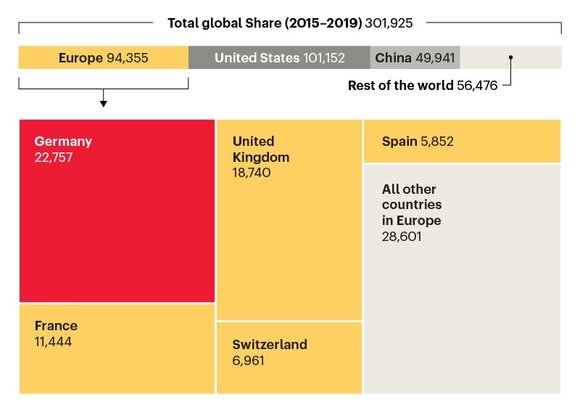
Research expenditure
In an analysis of selected countries’ efficiency of research spending, measured by how much Share they produce for each dollar of R&D invested, the United Kingdom comes out on top, with a normalized Share of 0.079 for each million US dollars spent. Germany is in the mid-range of efficiency, with a normalized Share of 0.042 for each million US dollars spent. Circles are sized according to each country’s total Share (2015–18). On the x axis, the United States has the highest annual average R&D spend; Finland, Norway and Israel are among the lowest in absolute spending terms.

Research output by population
Germany (population: 83 million) is among the best-performing nations in the world for Share per capita. Switzerland (population: 8.6 million) is a world leader by this measure, with the Swiss Federal Institute of Technology, Zurich its strongest institutional performer.
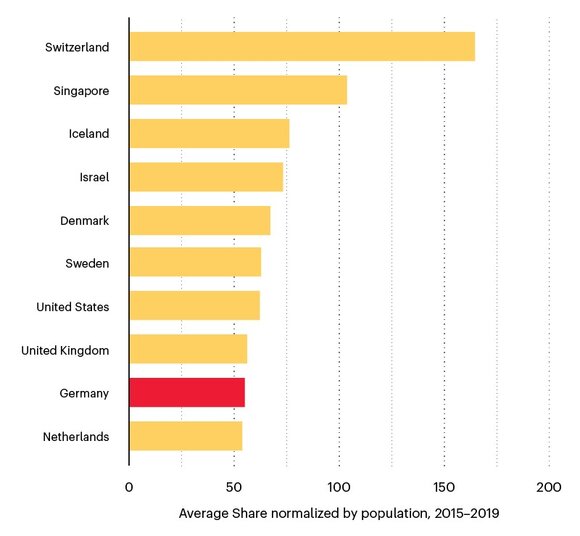
Forward-thinkers
In 2018, Germany was ranked fifth in the world for its ratio of European patent applications to population, a measure of inventiveness. Whereas Germany had 332 patent applications per million inhabitants, Switzerland, which out-performed every other country, had 956.
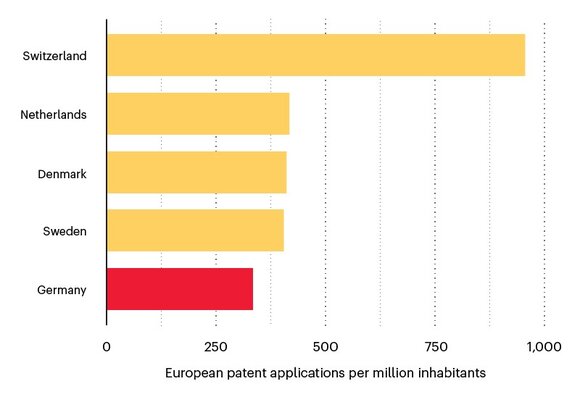
Science cities
Our top science cities in Europe are those with institutions that collectively published the highest output in the 82 journals tracked by the Nature Index from 2015 to 2019. Germany has two cities in the top 10, Berlin and Munich. Two of the country’s most prolific institutions, the Helmholtz Association of German Research Centres and Leibniz Association, are headquartered in Berlin. Germany’s leading institution in the Index, the Max Planck Society, has its headquarters in Munich, along with the country’s top-ranked universities: Ludwig Maximilians University of Munich and the Technical University of Munich.
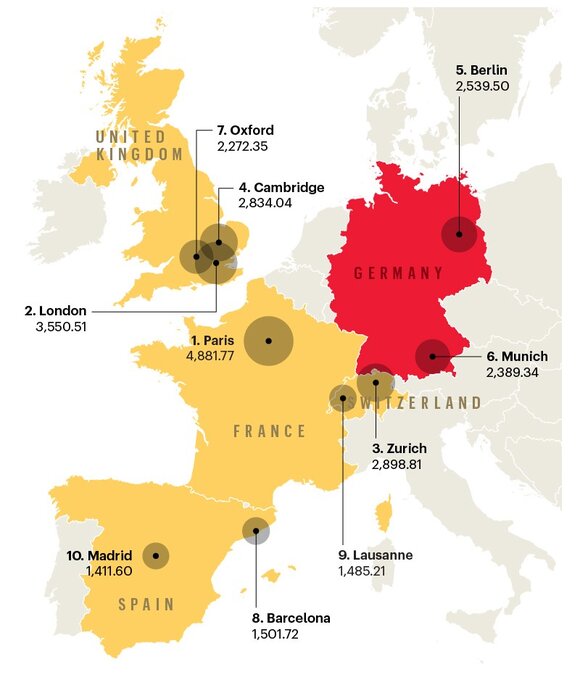
Research budget
The private sector contributes the vast majority of funding to Germany’s R&D budget. According to the European Union’s 2019 R&D Investment Scoreboard, 4 of the 20 most active R&D companies in the EU were based in Germany (Volkswagen, Daimler, BMW and Robert Bosch).
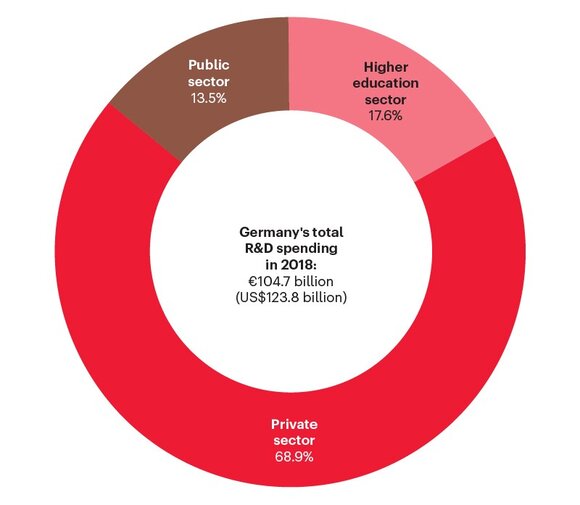
This story is part of Nature Index 2020 Germany. See more stories here.
